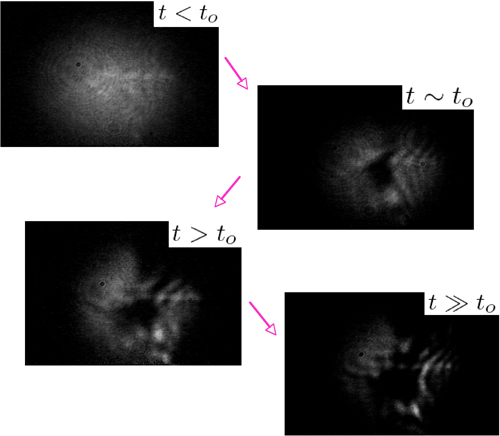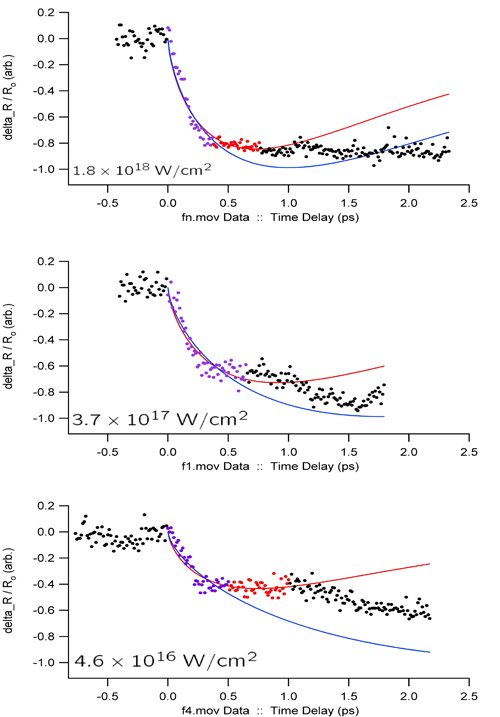Ultrafast microscopy is used to reveal the development of laser plasma interactions on the single micron scale following irradiation by relativistic pulses focused to ~1018 W/cm2. As illustrated below, relativistically intense pump light at 800 nm drives dynamics on the micron scale, while a probe flash of 400-nm light resolves the state of the interaction zone at a range of post pump delays.

The onset of blue light absorption meters the transport of energy from the laser to the plasma expansion. The initially reflective metallic surface loses its reflectivity due to resonance absorption only when its laser-modified density gradient has expanded to the order a quarter of critical density per wavelength near the density of strongest interaction. Evaluation of the most common transport mechanism for this interaction has drawn out the conclusion that collisional and radiative transport from the laser irradiated area outward is not sufficient to explain the rapid transport seen in the data presented below.

In the above series of images, the expansion of the dark region is measured in a series of movie-like frames to obtain the curves of time-resolved reflectivity seen below.

Results of this work are available in Optics Letters at the following link:

